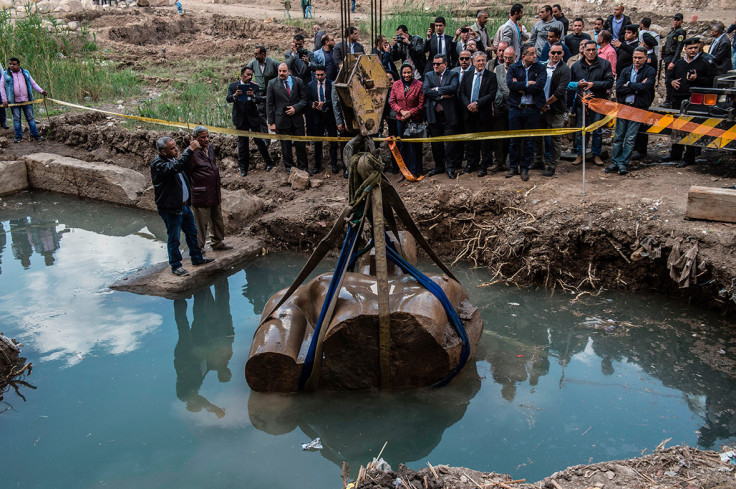Ancient pharaoh statue dug up from Cairo mud is not Ramses II but a different king
Egypt antiquities minister says discovery of likeness of Psamtek I is still of huge significance.
A statue found in the mud on the outskirts of Cairo, which was thought to represent the great pharaoh Ramses II, is of another ancient king.
Experts had believed that the statue pulled out from from ground water in eastern Cairo on the site of the ancient capital Heliopolis earlier in March was a depiction of Ramses II, who ruled from 1279 to 1213 BCE.
But the country's antiquities minister, Khaled al-Anani, has said that it is in fact a depiction of Psamtek I, who ruled around 600 years later, between 664 and 610 BCE.
The statue caused great excitement when it was discovered in the working-class area of Matariya and was thought to be the revered pharaoh.
But further investigations revelaed it had features from another time as well as bearing inscription 'Nebaa' - one of Psamtek I's five names.
"The only pharaoh who got his name 'Nebaa', is Psamtek I. He's a pharaoh of the 26th dynasty. If it belongs to this king, then it is the largest statue of the late period that was ever discovered in Egypt," al-Anani said, according to Al Ahram online.
Dietrich Raue, the head of the German archaeological mission at the site, said that the statue is carved in quartzite and retrieving it was a huge undertaking.
In two pieces, the fragments weighing up to three tonnes were removed and saved by restorers with the hope that they will be put pack together. They will be transferred to the Grand Egyptian Museum, which will open in 2018.

© Copyright IBTimes 2025. All rights reserved.






















